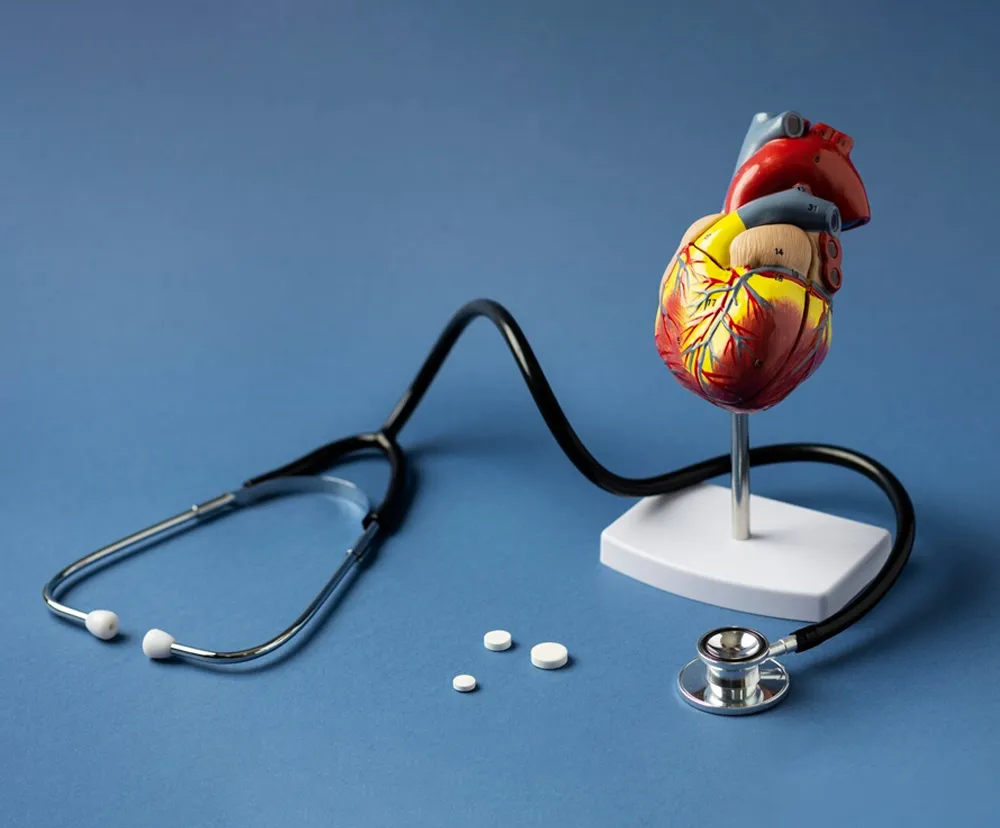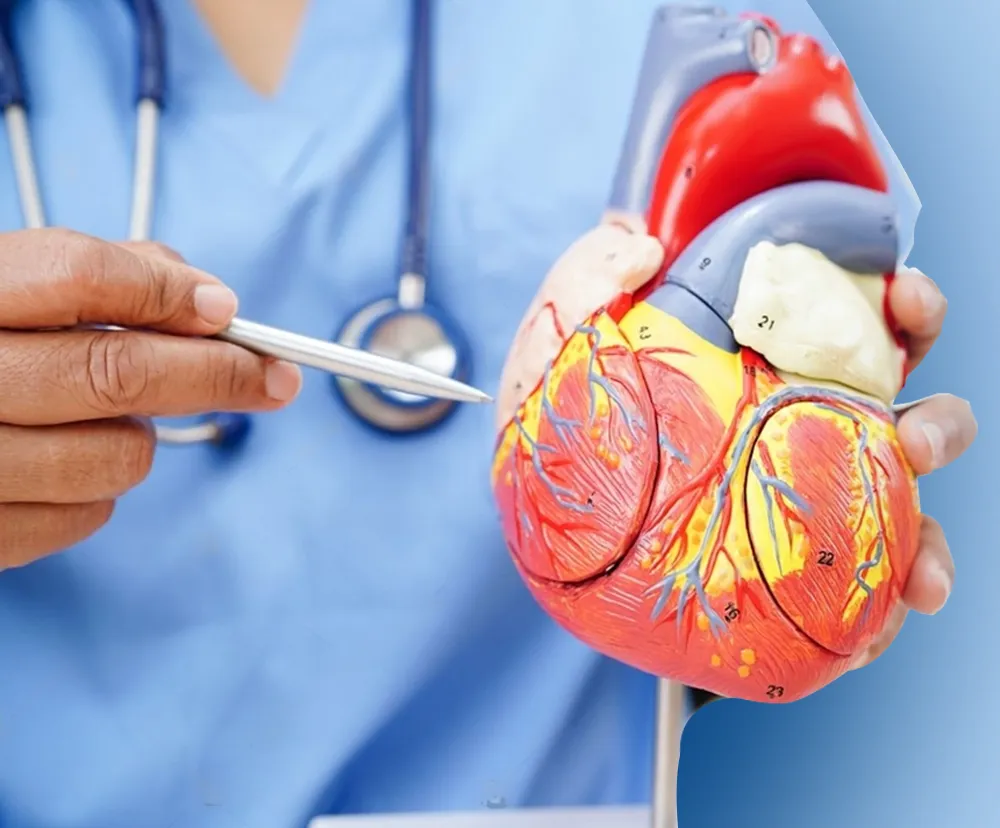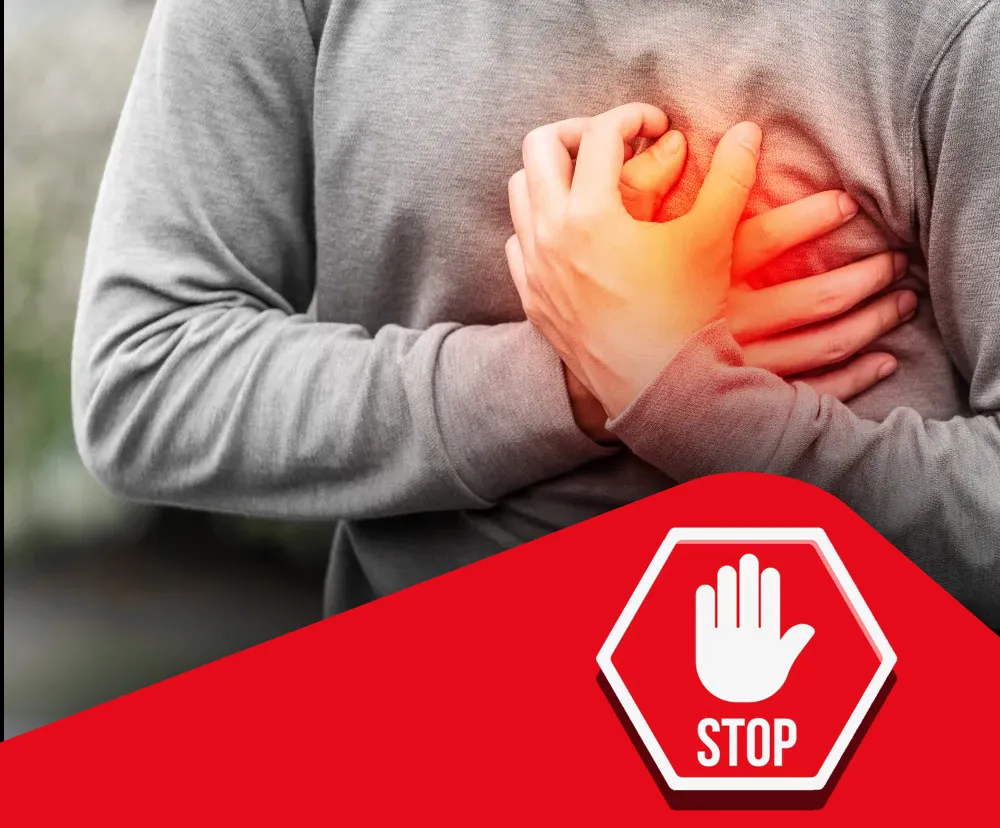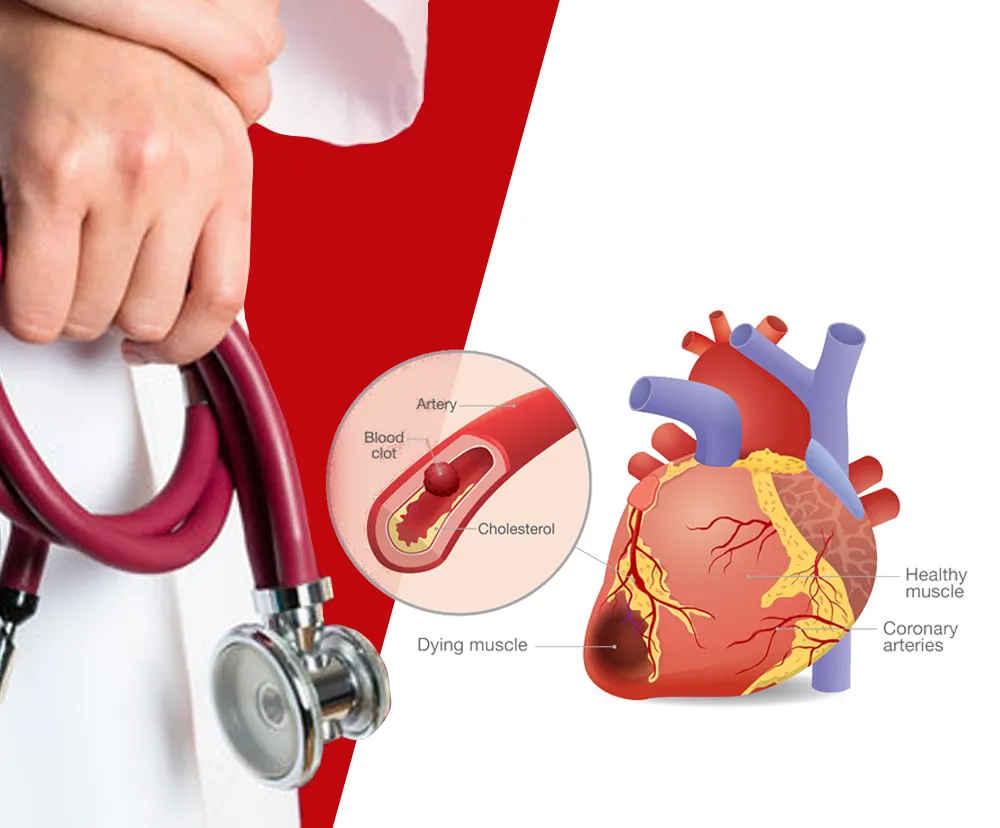Save lives by Understanding Silent Signs of a Heart Attack
Save lives by Understanding Silent Signs of a Heart Attack
- What are the sign of heart attack? How is a silent heart attack different?
- What are 3 warning signs of a heart attack in females?
- What are the signs of a silent heart attack in a woman?
- Timeline of early indications of a heart attack
- How does one know of possible future or lifetime risks of a heart attack or silent attack?
- Are genetic testing facilities available in Tamilnadu to check for risk of heart attack?
Introduction
Almost half of all heart attacks have symptoms that are known as silent heart attacks. This refers to a heart attack that occurs with mild symptoms or symptoms that you may not generally link to a heart attack. Here is a detailed look at understanding silent signs of a heart attack; this will help you save lives or could help you seek timely treatment.
What are the sign of heart attack? How is a silent heart attack different?
The signs or the symptoms of a heart attack may be different for different categories of people. However, there are some symptoms that are regarded as tell-tale or common. Some of the symptoms are mild in people, while the same symptoms may be intense in others. Symptoms that are regarded as common include the following:
- Chest pain experienced like some kind of pressure or tightness in the chest. There could be pain that is felt like a squeezing sensation.
- This pain may also extend or radiate to the shoulder, the arms, and the back. For some people, this may be experienced in the neck, the jaw, or even the abdomen.
- You may break out into a cold sweat, which is unlike normal sweating. For instance, a cold sweat is clammy and may be due to fear, stress or a medical condition. Normal sweating is warm, moist and due to exertion, heat.
- Overall tiredness, without any exertion, or even with mild exertion.
- Indigestion or heartburn is also regarded as a symptom of heart attack.
- A sudden lightheaded feeling or dizzy feeling could also be an indication of a heart attack.
- Feelings of nausea may also be felt when you have a heart attack.
- You may experience difficulty breathing.
There are certain differences that you need to be aware for better understanding silent signs of a heart attack. For instance, some heart attacks occur suddenly, whereas in other instances, people experience some kind of warning signs or symptoms. This may be felt much before an actual heart attack, like hours, or days or weeks prior to an attack.
One of the typical markers or indications of an impending heart attack could be some kind of chest pain that does not resolve with rest. This could also be felt as pressure on the heart and is known as angina. This is due to a temporary reduction in the flow of blood to the heart.
As part of understanding silent signs of a heart attack, here are the symptoms. A silent heart attack is known to be more dangerous as the symptoms may deceive you into believing that they are something else. The cause of a silent heart attack is the same as that of one with normal symptoms. The intensity or the nature of symptoms are the only difference. A silent heart attack is not to be mistaken or misunderstood as a mild heart attack. The subtle symptoms of a silent heart attack include the following:
- Difficulty breathing.
- Sudden weakness or overall tiredness.
- An overall sense of unease or feeling of discomfort.
- Sweating that is typically known as cold sweat.
- Overcome by feelings of nausea or vomiting.
- Abnormal lightheaded feeling or dizzy feelings.
- A feeling of mild pain either in the throat or the chest.
- Mild pain experienced in the arms or the back, and often mistaken as due to a sprain muscle pull.
What are 3 warning signs of a heart attack in females?
A few sex-specific symptoms are discernible, while most of the other symptoms are similar. One of the most common symptoms of heart attack is chest pain. The difference in this symptom between men and women is the manner in which it is experienced. Both men and women feel some type of chest pain, pressure or discomfort lasting more than a few minutes or it could be intermittent. However, for women this is slightly different – it is felt more like pressure or a tight sensation.
As part of understanding silent signs of a heart attack it is important to bear in mind, that women may sometimes have a heart attack without any chest pain. It is therefore wrong to keep that as the main way of confirming or ruling out a heart attack.
Women may have other symptoms that are not typically linked to pain in the chest. For instance, there could be discomfort experienced in the neck, in the jaw or shoulder. This could also be experienced in the upper back or the abdomen. Another symptom that could be felt is difficulty breathing without any physical exertion or even with mild exertion.
Symptoms like pain in either of the arms or in both the arms and possible feelings of nausea are other symptoms. Women may experience indigestion and heartburn and this could also be considered as a reason for further assessment.
One of the main issues in understanding silent signs of a heart attack in women is that most symptoms are not as noticeable. For instance, you may have heard that crushing chest pain is experienced during a heart attack. However, women may not experience this crushing pain. This mainly because the blockages could be in the smaller arteries and not the main arteries. As a result, the pain is experienced differently.
One important warning sign or distinction is that more women usually have symptoms when resting, or when asleep, compared to men. Due to the difference in the symptoms, there is a possibility of misdiagnosis or wrong diagnosis in women. It is therefore important to be cautious and aware of such symptoms and tell tale signs.
What are the signs of a silent heart attack in a woman?
When women have a silent heart attack, there is every likelihood that it could be mistaken as some other condition. For instance, a silent heart attack can exhibit symptoms similar like that of the flu. You are also likely to feel that some muscle in the back or your chest is sore. This makes it important for better understanding silent signs of a heart attack.
Other possible symptoms that could be mistaken include some abnormal pain in the jaw, the arms or upper back. Overall tiredness with no plausible reason and indigestion are other symptoms of a silent heart attack. Most people tend to believe that a silent heart attack is not serious and that it is a mild type of heart attack. However, that is a wrong assumption, as a silent heart attack can be as deadly or serious as one with typical symptoms.
Timeline of early indications of a heart attack
Impending signs of a heart attack can help you seek timely medical assistance. For instance, there could be certain indications minutes, days or weeks before a heart attack. This could help you in understanding silent signs of a heart attack. However, it is very important to note that this is only a possibility, and not the rule. Some people may get some impending signs of a heart attack, while some may not. Here is a timeline of some of the possible signs that some people may experience before an actual attack.
Weeks or Days Prior to a Heart Attack:
- There is a possibility of experiencing overall tiredness without any reason, days or weeks before a heart attack. You may feel tired without any reasons, or without any physical exertion or inadequate sleep.
- You may experience some unexplained discomfort or unease in the chest, your back, or arms. This could be discomfort that is not persistent, but something that is experienced in phases. You may feel this for a short while, it may resolve naturally, only to return again.
- Another indication of an impending heart attack is difficulty breathing even when you are carrying out normal activities. Sometimes you may also feel it difficult to breathe while at rest. If there are no external factors or environmental reasons for such a sensation, it could also be an indication of a medical condition.
Minutes or Hours Prior to a Heart Attack:
- An abnormal feeling of pressure, or a tightening sensation in the chest could also be a symptom, minutes or hours before an attack. This would most likely be experienced right in the center of the chest. This typically lasts for a few minutes, resolves and then returns. Some people experience this as some kind of a squeezing sensation.
- Any discomfort or pain that radiates to the shoulders, the arms, or back is also an indication. This could also extend to the neck, the jaw, or the stomach. It is necessary to note that pain or discomfort is felt like it is spreading towards these parts of the body.
- Cold sweat is an indication of some underlying medical condition. This includes the possibility of a heart attack. Cold sweat is due to an internal factor, whereas warm and moist sweat is due to actions or external factors.
- Feelings of nausea or a sudden dizzy and lightheaded feeling could also help in identifying or understanding silent signs of a heart attack.
- When chest pain is accompanied by increased difficulty in breathing, it could also indicate that a heart attack is impending. A heart attack may not be the only reason for such symptoms, but is also one of the reasons for such symptoms. The best option is to seek attention to rule out or confirm a heart attack.
The earl indications of a heart attack are mostly subtle in nature, especially if the person is about to have a silent heart attack. It is important to be forearmed and forewarned of any future possibility of a heart attack.
How does one know of possible future or lifetime risks of a heart attack or silent attack?
To a certain extent it is possible to be able to understand future or lifetime risk of a heart attack or a silent heart attack. Everything narrows down to the causes of a heart attack. An understanding of the reasons will help in assessing future or lifetime risk of heart attack. Primarily, these are the reasons for a heart attack:
- High blood pressure.
- High cholesterol.
- Coronary artery disease.
- Smoking, lifestyle, alcohol, obesity.
- Diabetes.
- Stress.
- Family history.
- Congenital heart disease.
- Underlying health conditions.
- Aging.
By learning if you are at risk of these conditions, you will have increased understanding silent signs of a heart attack. There are three different ways in which you can determine if you are risk of these conditions.
- Clinical tests – Blood tests, ApoB tests, imaging tests help to determine if you are risk of hypertension, diabetes, cholesterol and other risks.
- Genetic testing – These tests help to determine if you have any genetic mutations, or if you have any inherited conditions that put you at risk of heart attack.
- Assessing lifestyle – This will help you understand if your diet, sedentary lifestyle, obesity, smoking or drinking may cause risk of heart disease.
By assessing these risks, you will have some form of prediction about future or lifetime risk of heart attack. Based on this risk, you can then make necessary changes to your diet, lifestyle, and also turn to medications to reduce or mitigate the risk.
Are genetic testing facilities available in Tamilnadu to check for risk of heart attack?
Yes, advanced genetic testing facilities are available in Tamilnadu, to help determine risk of heart attack. This is basically a simple procedure, where a sample of your saliva or blood is used to look for the genetic component of risk of heart attack. This gives a clear risk score, that can then be used along with the results of clinical tests to understand the whole risk. Corrective or remedial measures can considerably reduce future or lifetime risk of heart attacks. There are multiple examples of people fighting and winning over the risk of a heart attack.
Medically Reviewed by
Dr.Rajasekar Cardiologist
Dr. Rajasekar is a cardiologist in Chennai, with extensive experience in the field. He completed his MBBS from Madurai Kamaraj University, followed by an MD in General Medicine and a DM in Cardiology from The Tamil Nadu Dr. M.G.R. Medical University (TNMGRMU).
Related Blogs :

Expert guidelines on treatment and management of cardiovascular diseases
Expert guidelines on treatment and management of cardiovascular diseases Introduction What are the various cardiovascular disease treatment options? What are the treatments for cardiovascular disease in advanced...


Why You Need To Start Understanding Cardiovascular Disease
Slide HeadingLorem ipsum dolor sit amet, consectetur adipiscing elit. Ut elit tellus, luctus nec ullamcorper mattis, pulvinar dapibus leo.Click Here Previous Next What is the main information...

Education: Master of Public Health (MPH) from the Postgraduate Institute of Medical Education and Research (PGIMER), Chandigarh Experience: A dedicated health writer with 8 years of experience covering a range of health topics, including public health and nutrition. His work has appeared on reputable Indian health websites and journals such as India Health Journal and The Health Times. Ravi also collaborates with Indian health agencies on public health campaigns.



